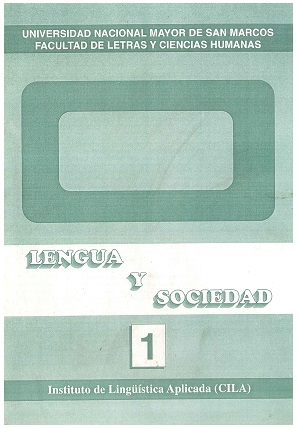About spelling in university language
DOI:
https://doi.org/10.15381/lengsoc.v1i1.26410Keywords:
orthography, universityAbstract
From the perspective of the phonological principle, it is easy to recognize that orthographic problems have their origin in the numerical mismatch between the elements involved: phonemes and graphemes. The quantitative inadequacy of these, in turn, lies in the different nature of their elements, which - with marked inequality - changed substantially over thirteen centuries. The rapid evolution of the sound system against the slow orthographic renewal led to a mismatch between the two, to such an extent that in many instances the written representation ceased to be analyzed in relation to the phonic sequence it was intended to concretize. Seen in this light, it is not difficult to accept that many of the faults that we frequently attribute to the scribe are not such, in the sense of a natural inability or incompetence for writing, but that these faults should rather be associated with the writing system itself, which, because it is asymmetrical, makes its handling uncontrollable. Correct writing no longer rests on a developed linguistic intuition, nor on a principle of phonographic internalization that relates a series of phonemes to a parallel sequence of graphemes, but on something quite different from its foundation: the ability to be antiphonographic.
Downloads
Published
Issue
Section
License
Copyright (c) 1998 Jorge Esquivel Villafana

This work is licensed under a Creative Commons Attribution 4.0 International License.
AUTHORS RETAIN THEIR RIGHTS
a. Authors retain their trade mark rights and patent, and also on any process or procedure described in the article.
b. Authors can submit to the journal Lengua y Sociedad, papers disseminated as pre-print in repositories. This should be made known in the cover letter.
c. Authors retain their right to share, copy, distribute, perform and publicly communicate their article (eg, to place their article in an institutional repository or publish it in a book), with an acknowledgment of its initial publication in the journal Lengua y Sociedad.
d. Authors retain theirs right to make a subsequent publication of their work, to use the article or any part thereof (eg a compilation of his papers, lecture notes, thesis, or a book), always indicating its initial publication in the journal Lengua y Sociedad (the originator of the work, journal, volume, number and date).



























